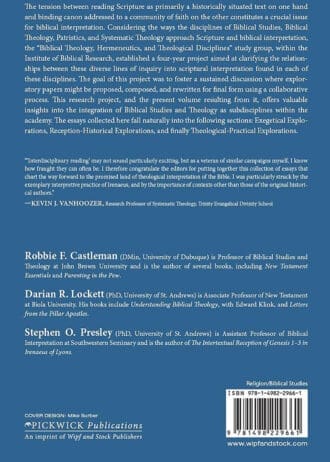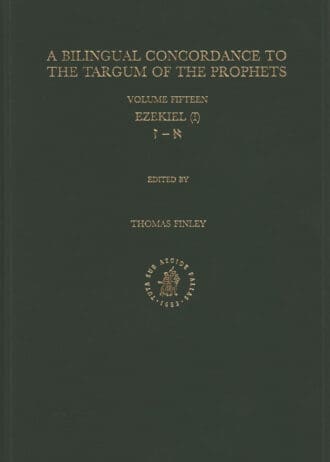Contributors to this volume examine the various collections of canonical sub-units in the canon, considering the state of the question regarding each particular collection. The chapters introduce the issues involved in sub-collections being accepted in the canon, summarize the historical evidence of the acceptance of these collections, and discuss the compositional evidence of “canonical consciousness” in the various collections. The contributors consider paratextual evidence, for example, the arrangement of the books in various manuscripts, the titles of the books, and also include evidence such as the presence of catchwords, framing devices, and themes. The book begins with a consideration of the two overarching collections – the Old and New Testaments. Next, several sub-collections within the Hebrew Bible (OT) are considered, including the Torah, Prophets, the Megilloth, the Twelve (both in their Masoretic Text and Septuagint forms), and the Psalter. In addition, sub-collections in the New Testament include the four-fold Gospel, the Pauline Collection (usually with Hebrews in the early manuscripts), the function of Acts within the New Testament, the Praxapostolos (Acts along with the Catholic Epistles), and the function of Revelation as the end of the canon.
Editorial Reviews
The subunits of this book serve the whole much in the same way the subunits they discuss serve the biblical canon. The novice reader is effectively introduced to the landscape of canonical studies through the intentionality of the book’s editors, while the experienced researcher is introduced to new ideas and constructive suggestions for further study. Glenny and Lockett, along with each contributor, have provided a resource for all levels of study that can and should be used in canon research moving forward.
Review of Biblical Literature
The focus on sub-units of the biblical books in this volume is a most welcome focus that has not received adequate attention by earlier scholars or in my work on canon formation. This volume provides an important advance on canon formation in this often neglected area.
From the foreword by Lee Martin McDonald, Acadia Divinity School, Canada
For years now, the scholarly interest in the biblical canon has only seemed to grow. But lacking in many of these discussions has been a deep exploration of the form and structure of the canon, with special attention to canonical sub-units. This new volume gathers together an impressive group of scholars who provide well-researched and even-handed essays that fill this important gap. I highly recommend it.
Michael J. Kruger, Reformed Theological Seminary, USA
A valuable resource for anyone interested in [Old Testament] or [New Testament] canon formation. Furthermore, its multifaceted overview of each sub-collection means Canon Formation would make an excellent supplemental textbook for OT and NT introduction courses.
Levi Baker, William Tennent School of Theology, USA, Reviews of Biblical and Early Christian Studies


















